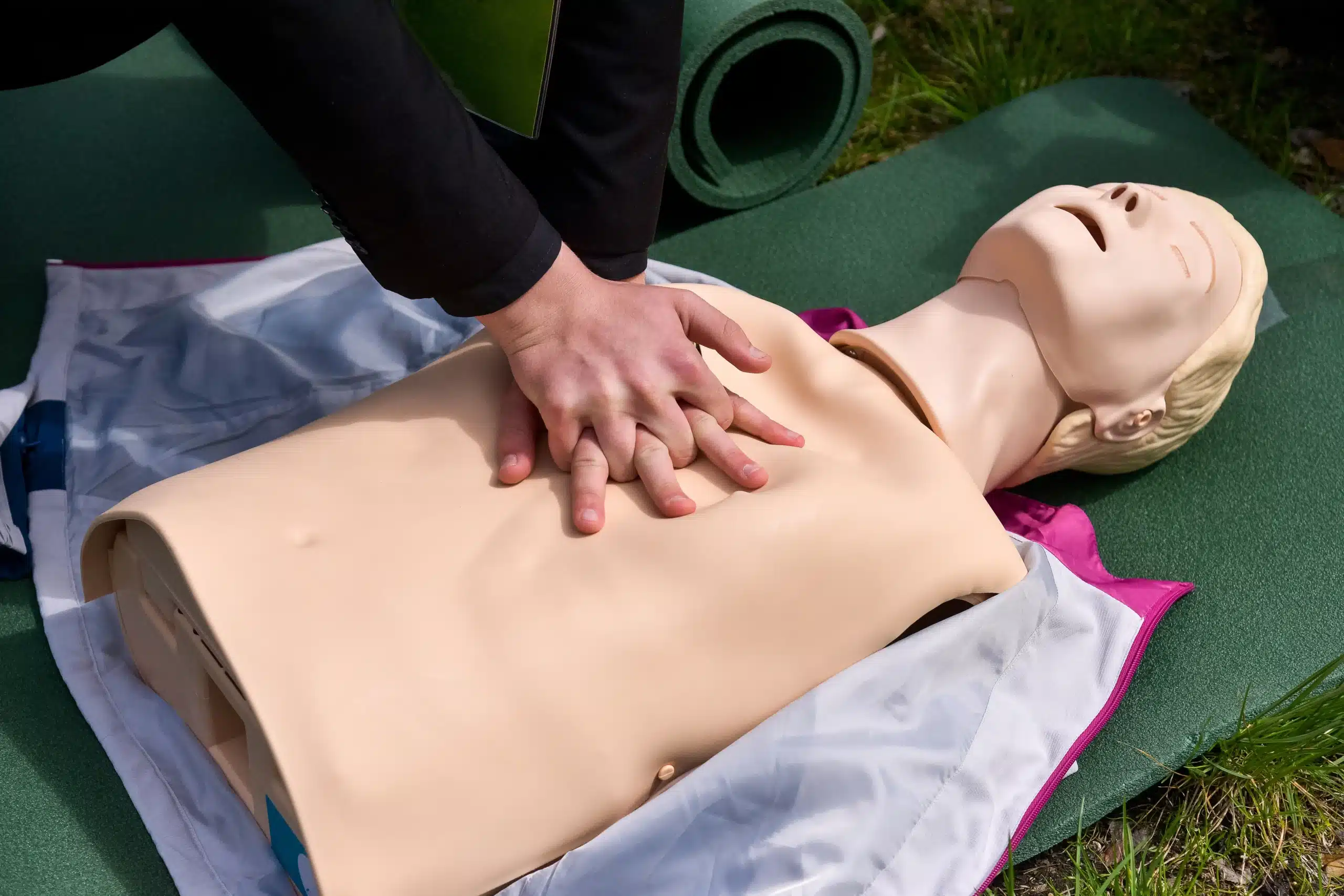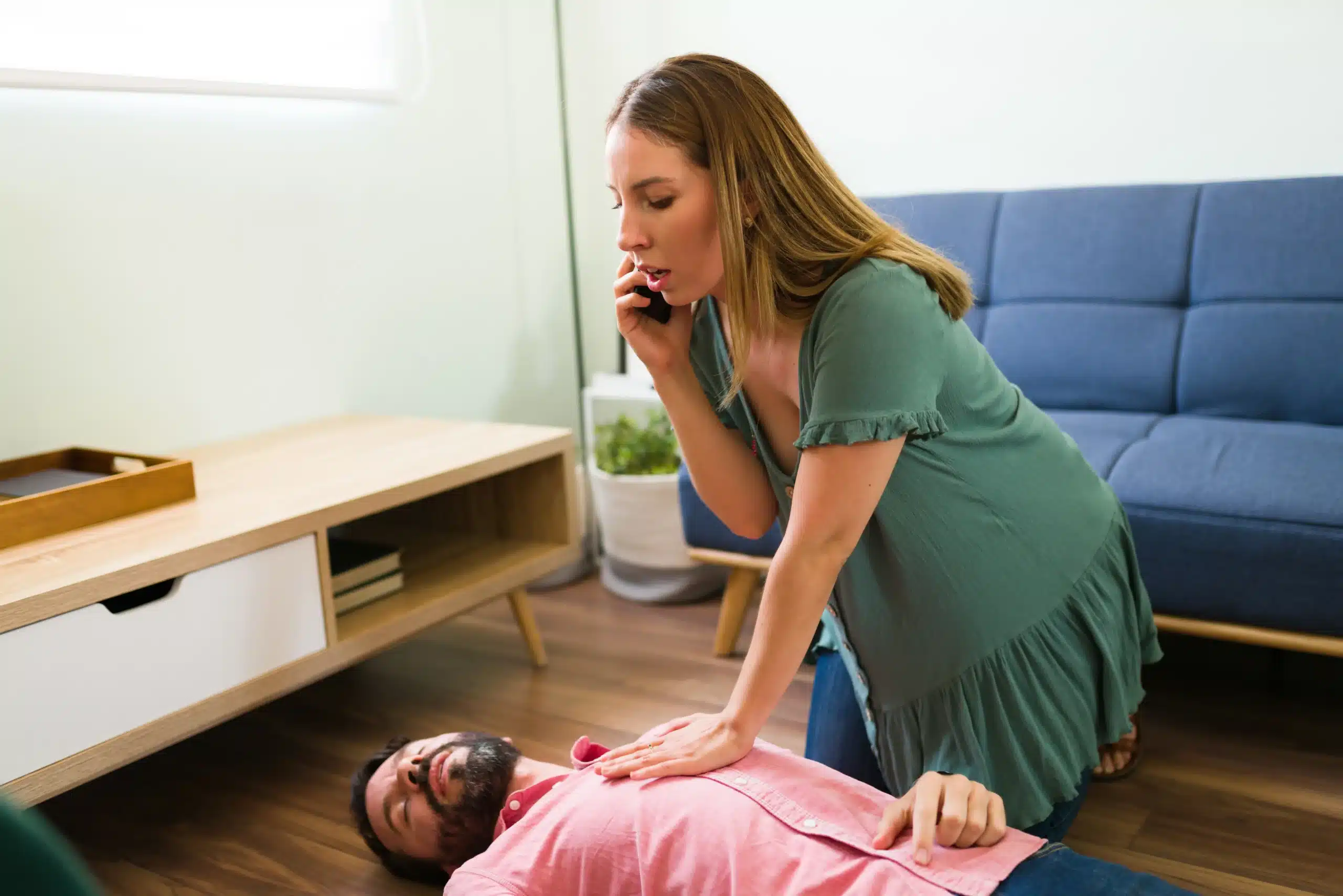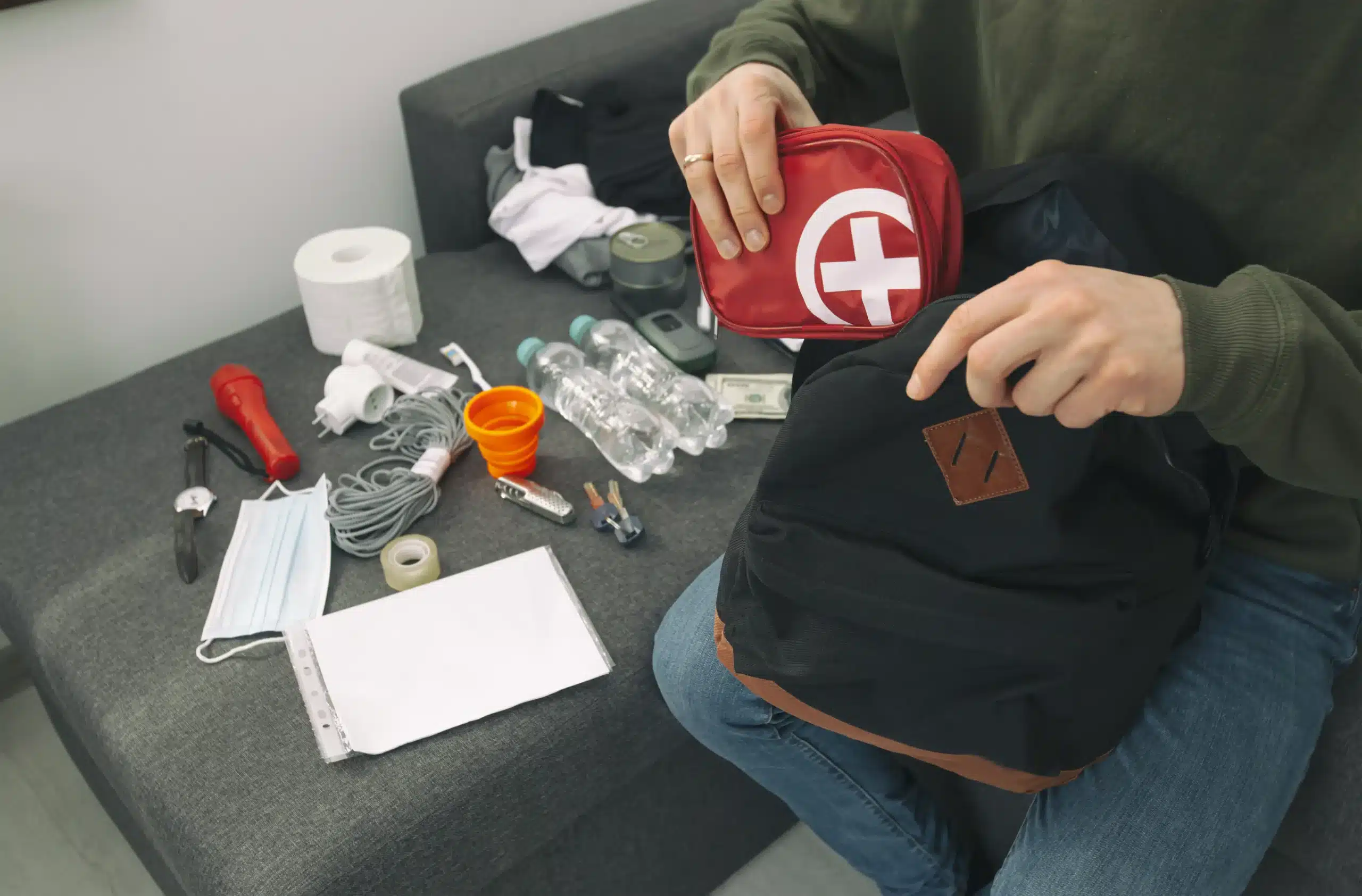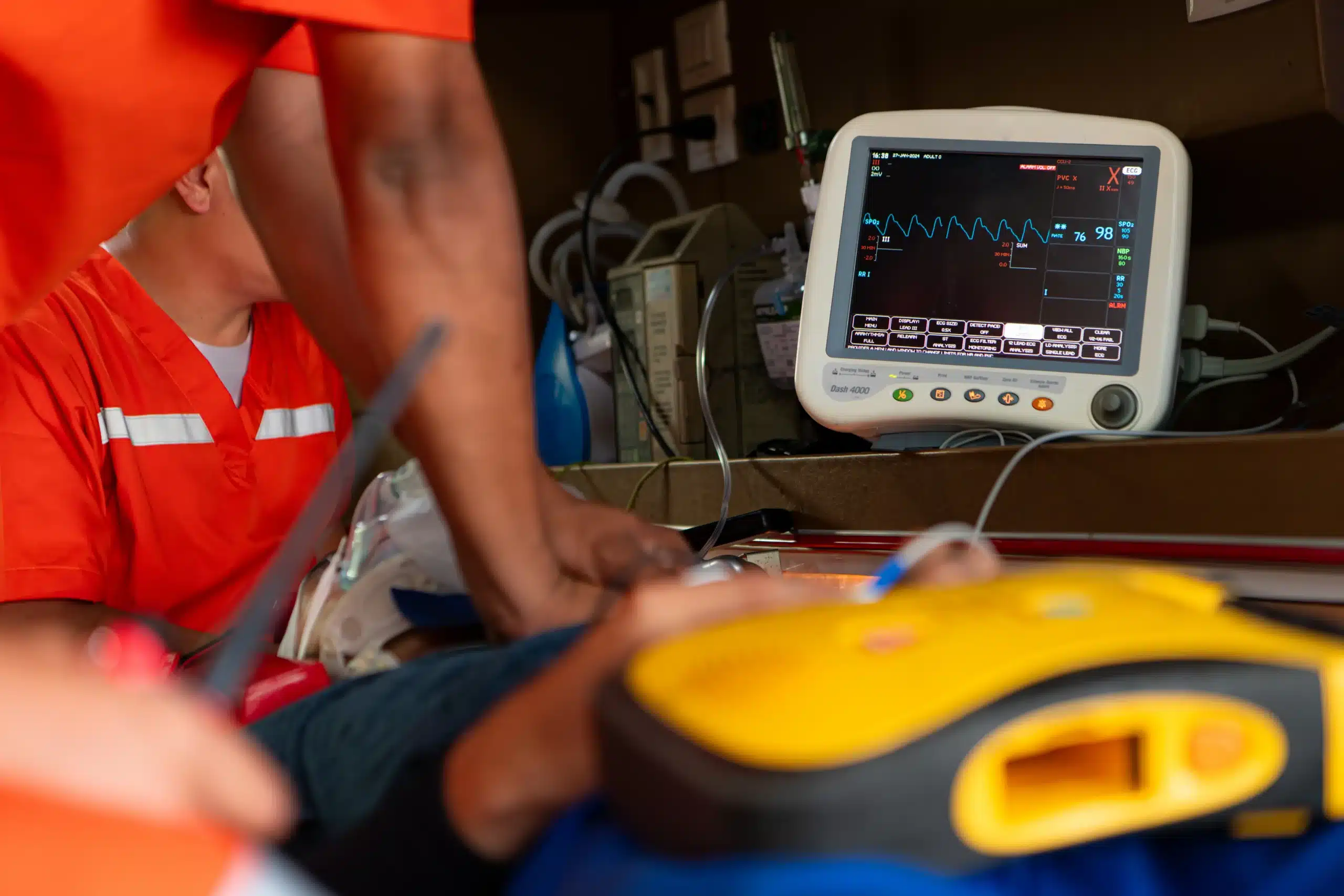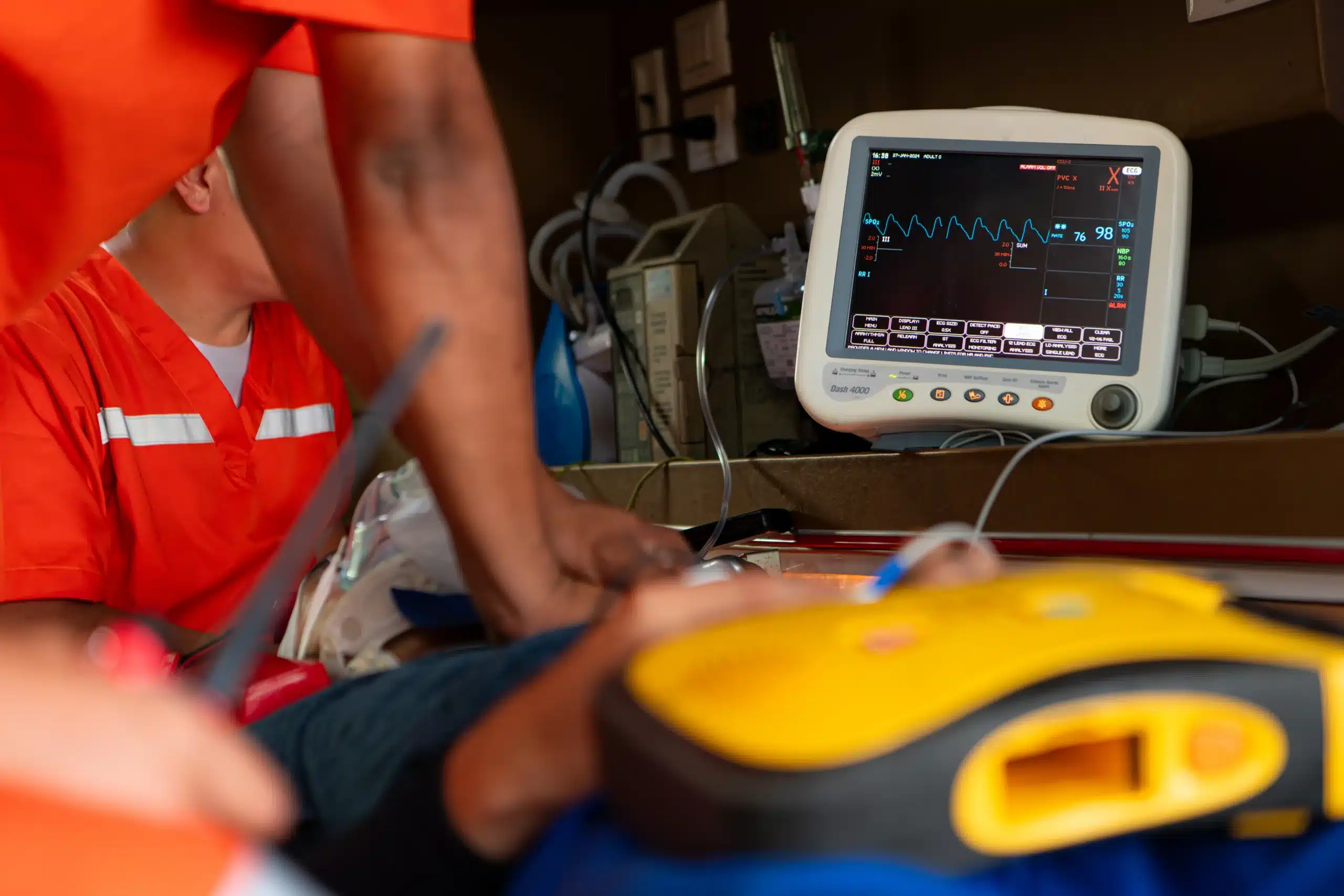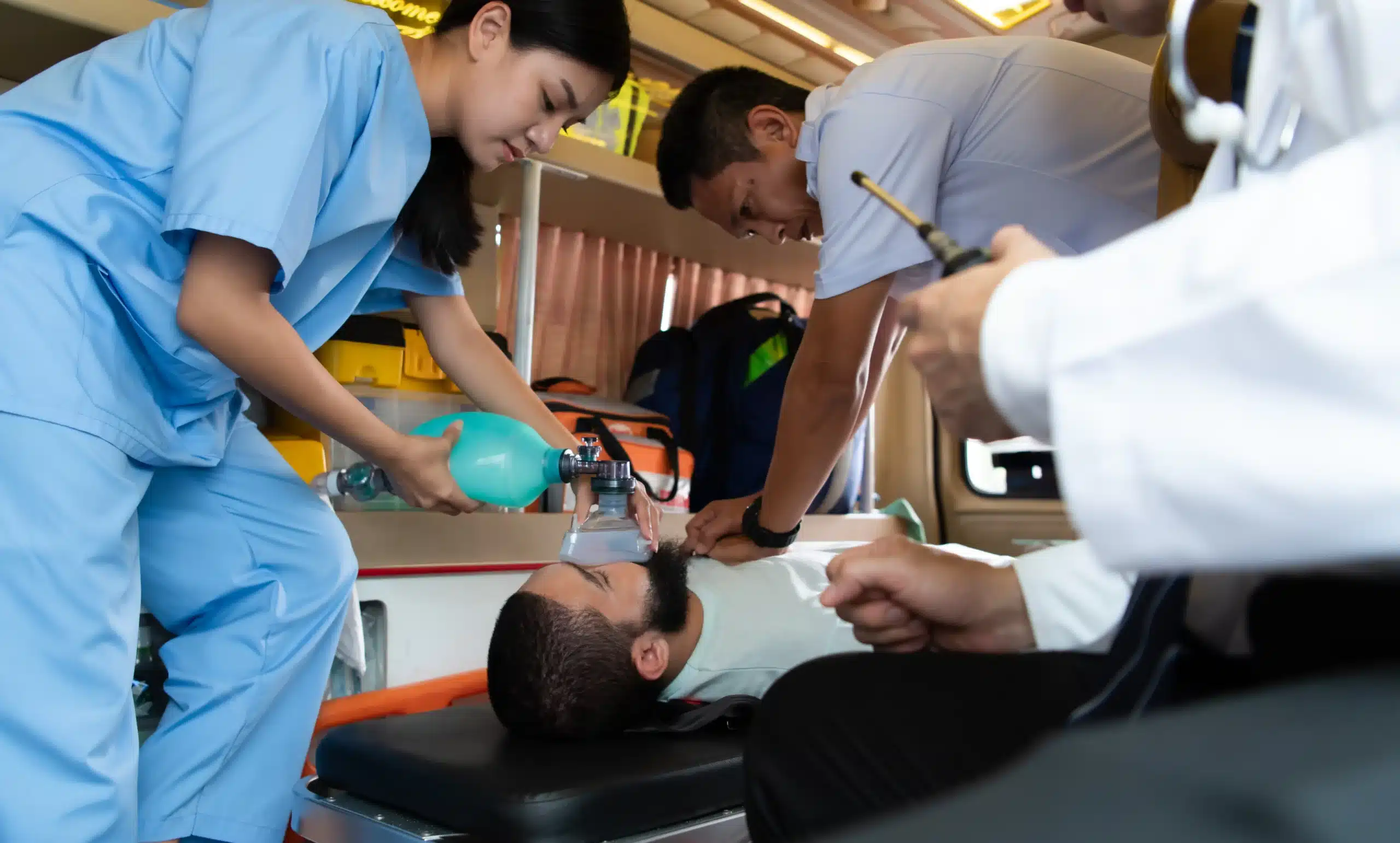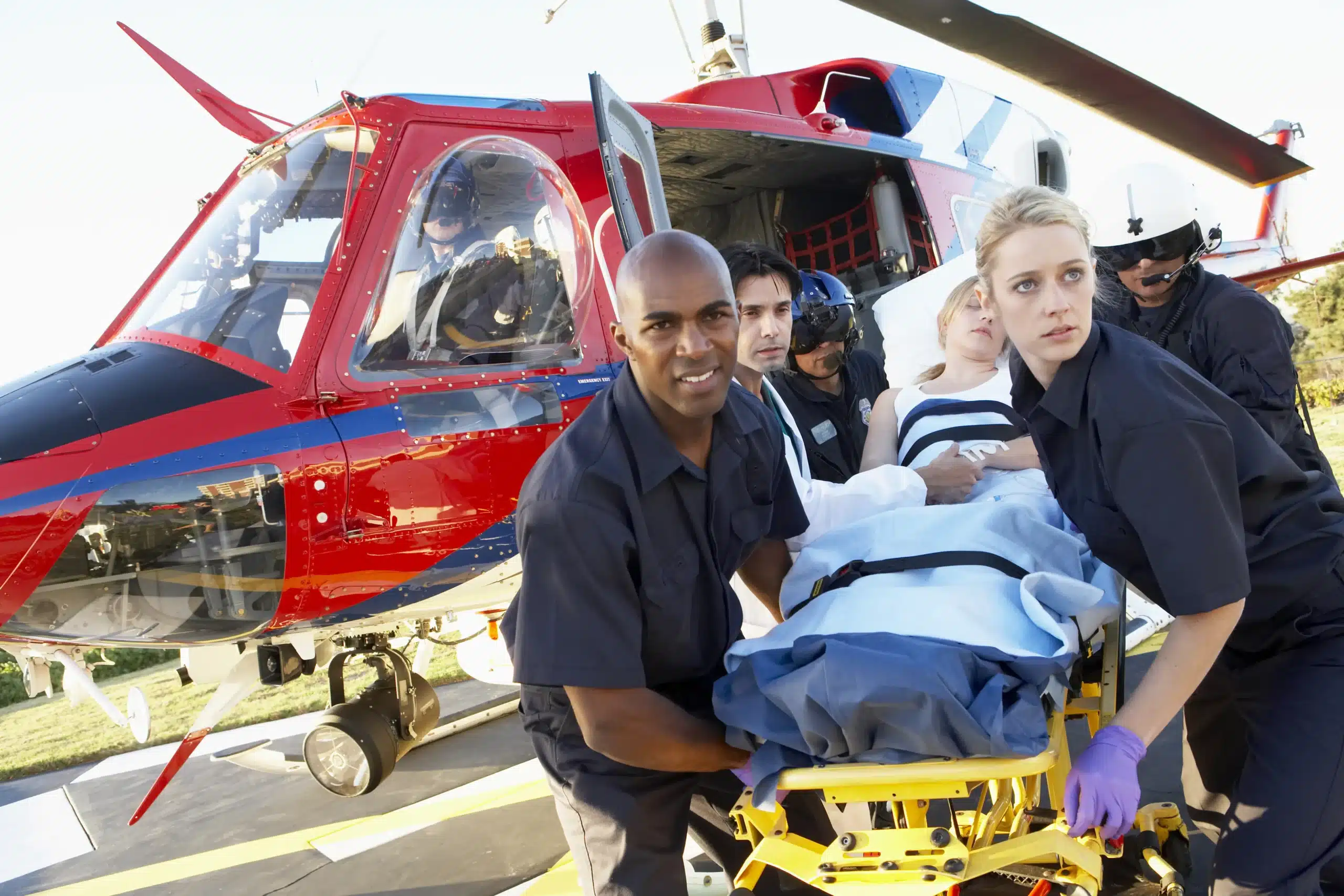Emergencies can happen anytime, anywhere. Being equipped with the skills to respond effectively can bring peace of mind and potentially save lives. This guide is your go-to resource for understanding CPR certification, whether you’re searching for “CPR certification near me” or want to learn more about the different types of courses available. We’ll cover everything from the basics of CPR to choosing the right training provider and staying up-to-date on the latest guidelines. Empower yourself with the knowledge and confidence to make a difference.
Key Takeaways
- CPR certification is a powerful skill: Equipping yourself with CPR training means you’re prepared to respond effectively in emergencies, potentially saving a life. Explore various course formats—in-person, online, or blended—to find what suits you best.
- Select a CPR course thoughtfully: Look for reputable providers with experienced instructors, comprehensive course content, and recognition by your employer (if needed). Check for accreditation from trusted organizations like the AHA or Red Cross.
- Stay CPR-ready: Regular practice and staying informed about the latest guidelines are key to maintaining your skills and confidence. Refresher courses and online resources can help you stay sharp and prepared for any emergency.
What is CPR Certification?
CPR certification means you’ve completed formal training and shown you know how to perform cardiopulmonary resuscitation (CPR). This training gives you the skills to respond effectively during medical emergencies like cardiac arrest, heart attack, or near-drowning. CPR involves chest compressions and rescue breaths to keep blood and oxygen flowing until professional medical help arrives. A valid CPR certification gives you the confidence and know-how to act quickly and potentially save a life.
What is CPR and Why is it Important?
CPR (Cardiopulmonary Resuscitation) combines chest compressions and rescue breaths to help someone whose heart has stopped or who has stopped breathing. CPR can dramatically increase the chances of survival, keeping blood and oxygen flowing to vital organs. In emergencies like cardiac arrest, heart attacks, choking, or drowning, immediate CPR can be the difference between life and death. Learning CPR empowers you to respond effectively and potentially save someone’s life.
Who Needs CPR Certification?
CPR certification is valuable for many people, not just healthcare professionals. It’s often required for healthcare providers, educators, and emergency responders, but anyone can benefit. The Red Cross offers CPR classes for the general public and specialized training for schools and workplaces. Think about getting certified if you’re a childcare provider, coach, lifeguard, or simply want to be prepared for emergencies. Even if your job doesn’t require it, knowing CPR makes you a valuable asset to your community.
Find CPR Certification Near You
Finding the right CPR certification course requires a little research. Start by exploring local and online options, then compare well-known providers to find the best fit.
Local Training Centers
Check with community centers, hospitals, and fire departments for CPR training courses in your area. Organizations like the American Red Cross often hold regular classes in various locations. Local classes offer the benefit of in-person instruction and hands-on practice. For residents of Rocklin, Roseville, and Sacramento, California, Rocklin CPR Classes offers convenient local training.
Online Provider Directories
Several online directories can help you locate CPR training providers. These directories often list certified instructors and training centers, along with course schedules and pricing. Always confirm that any course you choose meets your state’s requirements and workplace policies.
Popular CPR Certification Providers
Several nationally recognized organizations offer CPR certification. Understanding their strengths can help you make an informed choice.
American Heart Association (AHA)
The AHA is known for its comprehensive and rigorous training. AHA certification is often preferred by healthcare employers. You can find AHA-certified courses through their website or authorized training centers like Rocklin CPR Classes, which offers BLS, ACLS, and PALS certifications.
American Red Cross (ARC)
The Red Cross offers various CPR certification courses, including online, in-person, and blended learning options. Their widespread presence makes it easy to find a course nearby.
National Safety Council (NSC)
The NSC provides CPR training with an emphasis on hands-on practice and real-world scenarios. They offer courses for individuals and workplaces.
American Safety & Health Institute (ASHI)
ASHI offers a range of CPR and First Aid training suitable for both the general public and healthcare professionals.
Rocklin CPR Classes
Rocklin CPR Classes provides a variety of American Heart Association courses, including CPR, First Aid, BLS, ACLS, and PALS. They offer group discounts and flexible scheduling.
Types of CPR Certification Courses
Knowing which CPR certification is right for you depends on your job and lifestyle. Here’s a breakdown of the most common types of CPR courses: Basic Life Support (BLS), Advanced Cardiac Life Support (ACLS), and Pediatric Advanced Life Support (PALS). If you’re looking for CPR training in Rocklin, Roseville, or Sacramento, contact us to learn more about our course offerings.
Basic Life Support (BLS)
BLS certification covers fundamental life-saving techniques, including CPR for adults, children, and infants. It also teaches how to use an automated external defibrillator (AED) and how to relieve choking. The American Heart Association’s BLS course is designed for healthcare professionals and anyone who needs to know how to perform CPR in various settings. Think doctors, nurses, paramedics, EMTs, and other first responders. Many workplaces also require BLS certification for employees, even outside the healthcare field. Check with your employer to see what certifications they require. We also offer group discounts for businesses looking to train multiple employees.
Advanced Cardiac Life Support (ACLS)
ACLS certification builds upon the skills learned in BLS. It’s a more advanced course designed for healthcare providers involved in managing cardiopulmonary arrest or other cardiovascular emergencies. ACLS covers advanced airway management, intravenous drug administration, and electrocardiogram (ECG) interpretation. It’s essential for those working in critical care, emergency medicine, and intensive care units.
Pediatric Advanced Life Support (PALS)
PALS certification focuses on the specific needs of infants and children facing respiratory or cardiac emergencies. Like ACLS, it goes beyond basic CPR and teaches providers how to assess, treat, and stabilize pediatric patients in critical situations. PALS emphasizes teamwork, communication, and the unique physiological differences between children and adults. It’s a crucial certification for pediatricians, pediatric nurses, and other healthcare professionals working with young patients.
Choose the Right Course Format
Finding the right CPR course format depends on your learning style, schedule, and state requirements. Let’s break down the most common options: in-person, online, and blended learning.
In-Person Training
In-person CPR training offers hands-on learning and direct interaction with your instructor. This format is great for people who learn best by doing and value real-time feedback. You’ll practice skills on mannequins and get personalized guidance, which can boost your confidence in performing CPR during an actual emergency. This direct interaction is invaluable for mastering the physical techniques and asking questions as they come up. If you thrive in a classroom setting and appreciate hands-on learning, in-person training might be your best bet.
Online Certification
Online CPR certification offers flexibility and convenience, allowing you to learn at your own pace from anywhere with an internet connection. This can be a great option for busy schedules or those who prefer self-directed learning. However, keep in mind that online certification may not meet all employer or state requirements. Some states require in-person skills testing, so always check local requirements and those of your employer before choosing an online-only course. Make sure the online program you choose aligns with your specific needs and any required certifications.
Blended Learning Options
Blended learning combines the best of both worlds: online learning and in-person skills practice. You’ll typically complete the theoretical coursework online at your own pace, then attend an in-person session to practice your skills and demonstrate competency. This format offers more flexibility than traditional in-person classes while still providing the hands-on experience many learners find essential. As with online-only certification, it’s crucial to verify that a blended learning course meets your state’s requirements, especially if you need it for a specific job or license. Check with your state’s licensing board or your employer to ensure compliance.
CPR Certification: Cost and Duration
Getting CPR certified is an investment in your skills and the well-being of others. Let’s break down the typical costs and time commitment involved, so you can plan accordingly.
Average Price Ranges
CPR certification costs vary based on the training level, your location, and the certifying organization. Basic CPR classes typically range from $75 to $100. More advanced certifications, like ACLS or PALS, usually cost more. Always check with your chosen provider for their specific pricing. For those in the Rocklin, Roseville, and Sacramento areas, Rocklin CPR Classes offers competitive rates and a low-price guarantee.
Group Discounts and Promotions
If you’re training with a group, look for group discounts. Many providers offer reduced rates for group bookings, making it a cost-effective option for workplaces, community groups, or families. Contact Rocklin CPR Classes to discuss options for your group. Also, keep an eye out for seasonal promotions or discounts offered by organizations like the Red Cross, which often have special offers on training materials.
Typical Course Length
Most basic CPR courses can be completed in a single day, often lasting between four and six hours. More specialized courses, such as those for healthcare providers, may require a longer time commitment. The format you choose—in-person, online, or blended learning—can also influence the overall duration. Online components allow for self-paced learning, while in-person sessions provide valuable hands-on practice.
Certification Validity and Renewal
CPR certifications are typically valid for two years. To stay current and maintain your skills, renew your certification before it expires. Renewal courses are often shorter than the initial certification course, focusing on refreshing key techniques and updating any changes in guidelines. Plan to recertify every two years to ensure your skills are up-to-date and you’re prepared to respond effectively in an emergency.
Choose a CPR Provider
Picking the right CPR provider is key to getting a solid education. It’s more than just a certificate—it’s about feeling confident you can handle an emergency. Here’s what to consider:
Accreditation and Reputation
Look for providers accredited by nationally recognized organizations like the American Heart Association or the American Red Cross. A strong reputation matters too. Check out online reviews and see what other students say about their experiences. Quest Safety Training emphasizes that personalized training programs are at the heart of practical CPR certification. A reputable provider will offer courses tailored to different learning styles and needs. For example, Rocklin CPR Classes offers an ACLS course through the American Heart Association. They also provide a low-price guarantee and group discounts.
Instructor Qualifications
Experienced instructors bring real-world knowledge and can answer your questions effectively. They can also demonstrate proper techniques and offer personalized feedback. As Quest Safety Training points out, the value of these instructors goes beyond the immediate skills you gain in the course. A good instructor can instill the confidence you need to act quickly and effectively in a crisis. For courses like PALS, having a skilled instructor is essential for mastering the specialized techniques involved in pediatric care.
Course Content and Materials
Make sure the course covers the essentials: proper compression depth and rate, recoil, minimizing interruptions, and effective ventilation. Nick Lachey highlights these as key components of high-quality CPR. Up-to-date materials aligned with current guidelines are also crucial. Ask about the resources provided – are there manuals, videos, or online practice tools? These can reinforce your learning and help you retain the information. Rocklin CPR Classes offers a BLS course that covers these core components.
Employer Recognition
If you need CPR certification for your job, double-check that your employer will accept certification from the provider you’re considering. Healthline First Aid notes that many healthcare employers require certifications from approved providers that include in-person training. Contact your employer or HR department to confirm their requirements before you enroll. You can also reach out to the CPR provider directly and ask about their employer recognition status. Contact Rocklin CPR Classes to discuss your specific workplace requirements.
Prepare for Your CPR Certification
So, you’ve decided to get CPR certified—fantastic! Knowing what to expect can help you feel confident and prepared for your training. This section covers the basics to get you ready.
What to Expect During Training
CPR certification courses blend theory and hands-on practice. You’ll learn the fundamentals of CPR, including chest compressions, rescue breaths, and how to recognize the signs of a cardiac emergency. Expect a combination of lectures, demonstrations, and interactive exercises. Most classes use training mannequins, allowing you to practice proper hand placement and compression depth in a safe environment. You’ll also learn how to use an automated external defibrillator (AED). Many courses, like those offered by the American Red Cross, offer various learning formats, including online, in-person, and blended learning, to fit your schedule and learning style. Regardless of the format, you can expect to cover CPR techniques for both adults and children. After your training, many providers offer refreshers and printable resources to help you maintain your skills. Regular practice is key to staying proficient in CPR. For healthcare providers, courses like BLS for Healthcare Providers cover more advanced techniques.
What to Bring
While CPR certification doesn’t require a lot of gear, a few essentials can make your training experience smoother. Comfortable clothing is a must, as you’ll be actively participating in hands-on exercises. Bring a notebook and pen to jot down important notes and reminders. It’s also a good idea to check your state’s regulations and your employer’s requirements beforehand to ensure you enroll in the right course. Contact your employer or contact us to learn more. Finally, remember that upon successful completion of the course, you’ll receive a certification card, so have a safe place in mind to store it.
Maintain Your CPR Skills
Earning your CPR certification is a fantastic achievement, but staying sharp is essential. Regularly practicing and refreshing your skills ensures you’re always ready to act quickly and confidently in a crisis. Here’s how:
Refresher Courses
CPR techniques and guidelines can evolve, so refresher courses are vital. The American Heart Association and Red Cross offer renewal courses to keep your certification current and your skills aligned with the latest best practices. These courses reinforce core concepts and introduce any updates to protocols, ensuring you provide the most effective care. It’s similar to renewing your driver’s license—it keeps your knowledge fresh and your skills validated. Rocklin CPR Classes offers a variety of refresher courses to help you maintain your skills.
Practice Techniques
Hands-on practice is essential for maintaining muscle memory and confidence. Regularly practicing chest compressions and rescue breaths on a CPR training manikin helps solidify the techniques. Even practicing the steps with a friend or family member can be beneficial for reinforcing the procedures. This regular practice builds the confidence you need to react effectively under pressure.
Stay Updated on Guidelines
Emergency care guidelines are constantly evolving as medical knowledge grows. Staying informed about these updates is crucial for providing high-quality CPR. Organizations like the American Heart Association regularly publish updated guidelines, and resources like the National Institutes of Health offer valuable information on the latest research and recommendations. Staying current ensures your techniques are effective and aligned with best practices for saving lives.
Common CPR Certification Misconceptions
It’s easy to get confused about CPR facts. Let’s clear up a few common misconceptions about getting certified.
Certification Requirements
One common myth is that you absolutely must have formal CPR certification to perform CPR in an emergency. While certification isn’t legally required to help someone in need, having proper training ensures you can confidently and effectively administer CPR. A quality CPR course teaches the correct techniques, builds your confidence, and prepares you to respond calmly under pressure.
CPR Effectiveness
Another misconception is that CPR always revives someone experiencing cardiac arrest. Sadly, this isn’t true. CPR helps maintain blood flow to vital organs, increasing the chances of survival until professional medical help arrives. It’s a critical link in the chain of survival, but it doesn’t guarantee a positive outcome. Many factors influence survival rates, including the underlying cause of the cardiac arrest and how quickly professional medical care is available. Don’t let this discourage you, though. Even if someone doesn’t immediately regain consciousness, CPR significantly improves their odds. Learn CPR and become confident in your skills.
Some people worry about performing CPR incorrectly or causing injury. These concerns are valid, but high-quality CPR training addresses them head-on. Instructors demonstrate the proper techniques and provide ample opportunity for hands-on practice, so you’ll feel prepared to respond effectively in a real-life emergency. Hesitation can cost precious time, so building confidence through training is key. With practice, anyone can learn how to perform CPR on an unconscious person.
Training Costs and Accessibility
Another misconception is that learning CPR is expensive and inaccessible. While costs vary, many affordable options exist, including group discounts and community-based programs. CPR training is an investment in your skills and ability to help others—and it’s more accessible than you might think. Don’t let cost be a barrier. Check with local organizations like the American Red Cross or community centers for potential low-cost training opportunities.
Key Features of Quality CPR Courses
Choosing the right CPR course can be life-saving, literally. But with so many options, how do you know what to look for? Here are a few key features that signal a truly worthwhile and effective CPR class:
Experienced Instructors
Experienced, certified instructors are the backbone of any quality CPR course. They bring a depth of knowledge beyond the textbook, offering real-world insights and practical tips. A seasoned instructor can adapt to different learning styles, answer your questions, and provide personalized feedback. Look for classes led by instructors with extensive backgrounds in healthcare or emergency services. Their expertise will make a significant difference in your learning and confidence. Quest Safety Training discusses the importance of experienced instructors for an effective learning experience.
High-Quality Techniques
Effective CPR hinges on proper technique. A quality course will cover the key components of high-quality CPR, including chest compressions, airway management, and AED use. The training should emphasize correct hand placement, compression depth and rate, and proper ventilation. Look for courses that align with the latest guidelines from organizations like the American Heart Association. This ensures you learn the most up-to-date and effective methods. Journalia provides a helpful overview of the elements of high-quality resuscitation.
Hands-on Practice
CPR is a skill best learned through hands-on practice. A quality course will provide ample opportunities to practice on manikins, allowing you to develop muscle memory and confidence. This practice should include different scenarios and age groups (adult, child, and infant). The more you practice, the more prepared you’ll feel to respond in an emergency. CPR1 highlights the importance of proper hand placement during chest compressions—a skill honed through hands-on training. Look for courses that offer plenty of practice time and personalized feedback from instructors.
Related Articles
- CPR Training in Roseville: Your Complete Guide – Rocklin CPR Classes
- Why CPR is Critical in Healthcare – CPR and First-Aid Training
- CPR Classes in Roseville: Find the Right Course for You – Rocklin CPR Classes
- Find CPR Courses Near Me: Your Certification Guide – Rocklin CPR Classes
- CPR Training in Sacramento: Your Guide – Rocklin CPR Classes
Frequently Asked Questions
How do I choose the right CPR certification course? Consider your specific needs and goals. If you’re pursuing a healthcare career, certifications like BLS, ACLS, and PALS from the American Heart Association are often preferred. For general knowledge and preparedness, a basic CPR and First Aid course from the Red Cross or a similar organization might suffice. Also, think about your learning style. Do you prefer in-person instruction, online learning, or a blended approach? Finally, check local requirements and workplace policies to ensure the course you choose meets necessary standards.
What’s the difference between CPR and First Aid certification? CPR focuses specifically on life-saving techniques for cardiac and respiratory emergencies. First Aid covers a broader range of injuries and illnesses, including cuts, burns, fractures, and allergic reactions. While some overlap exists, they are distinct certifications. Many providers offer combined CPR and First Aid courses, which is a convenient way to gain both skill sets.
How long does CPR certification last, and how do I renew it? CPR certifications typically remain valid for two years. To renew, you’ll need to take a recertification course before your current certification expires. Renewal courses are often shorter than the initial certification and focus on refreshing essential skills and knowledge. Check with your certifying organization for specific renewal requirements and available courses.
What if I’m nervous about performing CPR in a real emergency? It’s completely normal to feel apprehensive. That’s why high-quality training is so important. Reputable CPR courses provide ample opportunities for hands-on practice and guidance from experienced instructors. This practice builds confidence and helps you develop the muscle memory needed to respond effectively under pressure. Remember, any attempt at CPR is better than none.
Are online CPR certifications accepted everywhere? While online CPR courses offer convenience and flexibility, acceptance can vary. Some employers and regulatory bodies may require in-person skills evaluation as part of the certification process. Always check with your employer or relevant licensing board to confirm whether a fully online certification meets their specific requirements. Many organizations offer blended learning options that combine online coursework with in-person skills sessions, which may be a more widely accepted alternative.
